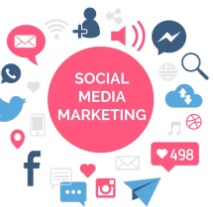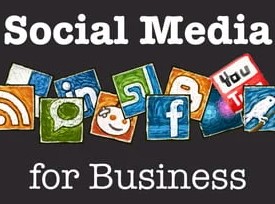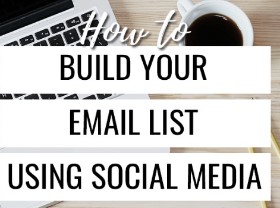Social media has become one of the most effective ways to promote products and services. With billions of active users on platforms such as Facebook, Instagram, Twitter, TikTok, and LinkedIn, businesses have the opportunity to connect with a global audience, build brand awareness, and drive sales. However, to successfully promote products on social media, it is crucial to have a strategic approach. This article will walk you through the steps on how to effectively promote your products on social channels, leveraging both organic and paid methods.
1. Understand Your Target Audience
Before jumping into social media promotion, it is important to understand who your target audience is. Without a clear understanding of your customers, your promotion efforts will lack focus, and you will waste resources targeting the wrong people.
Demographics: Define the age, gender, income level, location, and education of your ideal customers.
Psychographics: Understand their interests, values, behaviors, and pain points.
Platform Preferences: Identify which social media platforms your target audience is most active on. For example, younger audiences may prefer TikTok or Instagram, while professionals may be more active on LinkedIn.
Use analytics tools available on social media platforms to gain insights into your current audience and refine your approach.
2. Create High-Quality Content
Social media promotion is largely about engaging content. Quality content not only attracts attention but also keeps your audience engaged, builds trust, and encourages conversions. There are various types of content you can create:
Visual Content: Use high-resolution images and videos to showcase your products. People are more likely to engage with visual content than text-heavy posts. High-quality product images, behind-the-scenes footage, and user-generated content can help boost engagement.
Videos: Videos are some of the most powerful tools for promoting products on social media. They allow you to demonstrate the features and benefits of your product in an engaging way. Short-form videos on platforms like Instagram Reels or TikTok can be used to showcase quick product demonstrations or tutorials.
Stories: Platforms like Instagram and Facebook have the “Stories” feature, which is a great tool for sharing short-lived, yet impactful content. Use Stories to promote limited-time offers, product launches, or flash sales.
User-Generated Content: Encourage your customers to post photos and videos of themselves using your product, and share them on your social channels. User-generated content adds credibility and acts as social proof that your product is effective.
Blog Posts and Articles: Share helpful articles or blog posts that provide value to your audience while subtly promoting your products. Educational content can position you as an industry expert, and it’s a great way to build trust.
3. Leverage Hashtags and Keywords
Hashtags and keywords are essential for increasing the visibility of your content. When used strategically, they can help you reach a larger audience who are interested in your products.
Hashtags: Use relevant and trending hashtags to ensure your posts appear in the feeds of users searching for similar content. For example, if you’re selling fitness equipment, hashtags like #fitnessgear, #homeworkouts, or #fitnessmotivation will attract fitness enthusiasts to your products.
Branded Hashtags: Create your own branded hashtag to promote your product and encourage others to use it. This can help build a community around your brand and increase brand awareness. For instance, if you sell eco-friendly products, you might create a hashtag like #GreenLivingWith[YourBrandName].
Keywords: Use specific keywords in your posts to increase their discoverability through social media search functions. Think about what your target audience might search for and incorporate those keywords into your captions, video titles, and descriptions.
4. Use Influencer Marketing
Influencer marketing has become one of the most effective strategies for promoting products on social media. By partnering with influencers who already have a strong following in your niche, you can tap into their audience and gain credibility.
Choose the Right Influencers: When selecting influencers, make sure their values align with your brand. Look for influencers who have a genuine following and whose audience matches your target demographic. Micro-influencers (with smaller, highly engaged followings) can often be more cost-effective and generate better engagement than macro-influencers.
Sponsored Posts: Pay influencers to create posts that feature your product. This could be a product review, an unboxing video, or a tutorial on how to use your product. Ensure that the influencer’s post looks authentic and doesn’t come across as overly promotional.
Affiliate Programs: Set up affiliate programs where influencers earn commissions for every sale they drive through their social media channels. This can incentivize them to promote your products more actively.
Product Giveaways: Partner with influencers to host giveaways. This can generate excitement and encourage followers to engage with your brand, ultimately leading to higher visibility and increased sales.
5. Run Paid Advertisements
While organic reach on social media can be limited, paid advertisements are a great way to boost your promotion efforts. Social media platforms offer robust ad tools that allow you to target specific audiences based on demographics, interests, behaviors, and location.
Facebook and Instagram Ads: Facebook and Instagram offer highly customizable ad campaigns, allowing you to target a very specific audience. You can use different ad formats like carousel ads, video ads, or collection ads to showcase your products.
Pinterest Ads: Pinterest is another powerful platform for e-commerce. Promoted Pins allow you to reach people who are searching for inspiration and products that align with your offerings.
Twitter Ads: Twitter ads can help you promote specific offers or new products to a targeted audience. Twitter also allows you to track engagement metrics, so you can adjust your campaigns accordingly.
LinkedIn Ads: If you sell B2B products, LinkedIn is a great platform for promoting your products through paid ads. LinkedIn’s targeting options allow you to focus on industry professionals, decision-makers, and company executives.
TikTok Ads: TikTok is a platform that thrives on creative, fun content. TikTok ads can be used to reach a younger demographic and promote your product in a viral manner.
6. Collaborate with Other Brands
Collaborating with other brands in complementary niches can help expand your reach on social media. By partnering with a brand that shares your target audience but isn’t a direct competitor, you can promote your products to a wider audience.
Joint Campaigns: Co-create content or run joint promotions with another brand. For example, if you sell fitness products, you could collaborate with a brand that sells health supplements to offer a bundled deal.
Cross-Promotion: Cross-promote each other’s products on social media. This allows both brands to gain exposure to a new set of potential customers.
Collaborative Giveaways: Partner with a brand to host a giveaway where participants can win products from both companies. This can attract new followers and increase brand visibility.
7. Engage With Your Audience
Promoting products on social media is not just about posting content; it’s also about building relationships with your followers. Engagement is key to keeping your audience interested in your brand.
Respond to Comments and Messages: Make sure to actively respond to comments, questions, and messages. Show your audience that you care about their feedback and are available to help them with any inquiries.
Host Q&A Sessions: Use live video features to host Q&A sessions about your products or services. This allows you to engage directly with your audience and answer any questions they might have.
Polls and Surveys: Use features like Instagram polls or Twitter surveys to engage your followers and gather feedback on your products. This not only boosts engagement but also helps you understand what your audience wants.
Customer Service: Provide excellent customer service via social media by promptly addressing any complaints or concerns. Happy customers are more likely to recommend your products to others.
8. Measure Your Results
Lastly, it’s important to measure the success of your social media efforts. Use social media analytics tools to track the performance of your posts, ads, and overall campaigns. Look at key metrics such as:
Engagement Rate: Track likes, shares, comments, and mentions to determine how your audience is interacting with your content.
Click-Through Rate (CTR): Monitor how many people click on the links in your posts or ads, as this indicates the effectiveness of your call-to-action (CTA).
Conversion Rate: Track how many social media users are purchasing your products after seeing your posts or ads. This helps you understand how well your promotion is driving sales.
ROI: Evaluate the return on investment (ROI) from your paid ads and influencer partnerships to determine if your spending is yielding positive results.
Promoting your products on social media requires a comprehensive strategy that combines engaging content, paid ads, influencer partnerships, and audience interaction. By understanding your target audience, creating high-quality content, leveraging hashtags, and measuring your results, you can successfully use social channels to promote your products and grow your business. Whether you’re a small business or a large corporation, social media is an invaluable tool that, when used strategically, can drive visibility, engagement, and sales for your products.




